|
#2
26th November 2014, 10:56 AM
| |||
| |||
| Re: NET Exam’s Papers for Computer Science
Here I am providing you syllabus and previous years question papers of computer science for NET Exam. NET exam is conducted every year by UGC for selection of candidates for lecturer post and research followers. There will be two question papers in UGC NET CS Exam: Paper II Paper III (Part – A & B) Syllabus of UGC NET CS: 1. Discrete Structures: Sets, Relations, Functions. Pigeonhole Principle, Inclusion-Exclusion Principle, Equivalence and Partial Orderings, Elementary Counting Techniques, Probability. Measure (s) for information and Mutual information. Computability: Models of computation-Finite Automata, Pushdown Automata, Non – determinism and NFA, DPDA and PDAs and Languages accepted by these structures. Grammars, Languages, Non – computability and Examples of non – computable problems. Graph: Definition, walks, paths, trails, connected graphs, regular and bipartite graphs, cycles and circuits. Tree and rooted tree. Spanning trees. Eccentricity of a vertex radius and diameter of a graph. Central Graphs. Centres of a tree. Hamiltonian and Eulerian graphs, Planar graphs. Groups: Finite fields and Error correcting / detecting codes. 2. Computer Arithmetic: Propositional (Boolean) Logic, Predicate Logic, Well – formed – formulae ( WFF ), Satisfiability and Tautology. Logic Families: TTL, ECL and C – MOS gates. Boolean algebra and Minimization of Boolean functions. Flip-flops – types, race condition and comparison. Design of combinational and sequential circuits. Representation of Integers: Octal, Hex, Decimal, and Binary. 2′s complement and 1′s complement arithmetic. Floating point representation. 3. Programming in C and C++: Programming in C: Elements of C – Tokens, identifiers, data types in C. Control structures in C. Sequence, selection and iteration(s). Structured data types in C-arrays, struct, union, string, and pointers. O – O Programming Concepts: Class, object, instantiation. Inheritance, polymorphism and overloading. C++ Programming: Elements of C++ – Tokens, identifiers. Variables and constants, Datatypes, Operators, Control statements. Functions parameter passing. Class and objects. Constructors and destructors. Overloading, Inheritance, Templates, Exception handling. 4. Relational Database Design and SQL: E-R diagrams and their transformation to relational design, normalization – INF, 2NF, 3NF, BCNF and 4NF. Limitations of 4NF and BCNF SQL: Data Definition Language (DDL), Data Manipulation Language ( DML ), Data Control Language ( DCL ) commands. Database objects like-Views, indexes, sequences, synonyms, data dictionary. 5. Data and File structures: Data, Information, Definition of data structure. Arrays, stacks, queues, linked lists, trees, graphs, priority queues and heaps. File Structures: Fields, records and files. Sequential, direct, index-sequential and relative files. Hashing, inverted lists and multi – lists. B trees and B+ trees. 6. Computer Networks: Network fundamentals: Local Area Networks ( LAN ), Metropolitan Area Networks ( MAN ), Wide Area Networks ( WAN ), Wireless Networks, Inter Networks. Reference Models: The OSI model, TCP / IP model Data Communication: Channel capacity. Transmission media-twisted pair, coaxial cables, fibre – optic cables, wireless transmission-radio, microwave, infrared and millimeter waves. Lightwave transmission. Thelephones – local loop, trunks, multiplexing, switching, narrowband ISDN, broadband ISDN, ATM, High speed LANS. Cellular Radio. Communication satellites-geosynchronous and low-orbit Internetworking: Switch / Hub, Bridge, Router, Gateways, Concatenated virtual circuits, Tunnelling, Fragmentation, Firewalls. Routing: Virtual circuits and datagrams. Routing algorithms. Conjestion control Network Security: Cryptography-public key, secret key. Domain Name System (DNS) – Electronic Mail and Worldwide Web (WWW). The DNS, Resource Records, Name servers. E-mail-architecture and Serves 7. System Software and Compilers: Assembly language fundamentals (8085 based assembly language programming). Assemblers-2-pass and single-pass. Macros and macroprocessors Loading, linking, relocation, program relocatability. Linkage editing Text editors. Programming Environments. Debuggers and program generators Compilation and Interpretation. Bootstrap compilers. Phases of compilation process. Lexical analysis. Lex package on Unix system. Context free grammars. Parsing and parse trees. Representation of parse ( derivation ) trees as rightmost and leftmost derivations. Bottom up parsers-shift-reduce, operator precedence, and LR. YACC package on Unix system. Topdown parsers-left recursion and its removal. Recursive descent parser. Predictive parser. Intermediate codes-Quadruples, Triples, Intermediate code generation, Code generation, Code optimization. 8. Operating Systems (with Case Study of Unix): Main functions of operating systems. Multiprogramming, multiprocessing, and multitasking Memory Management: Virtual memory, paging, fragmentation. Concurrent Processing: Mutual exclusion. Critical regions, lock and unlock. Scheduling: CPU scheduling, I / O scheduling, Resource scheduling. Deadlock and scheduling algorithms. Banker’s algorithm for deadlock handling. UNIX: The Unix System: File system, process management, bourne shell, shell variables, command line programming. Filters and Commands: Pr, head, tail, cut, paste, sort, uniq, tr, join, etc., grep, egrep, fgrep, etc., sed, awk, etc. System Calls ( like ): Creat, open, close, read, write, iseek, link, unlink, stat, fstat, umask, chmod, exec, fork, wait, system. 9. Software Engineering: System Development Life Cycle (SDLC): Steps, Water fall model, Prototypes, Spiral model. Software Metrics: Software Project Management. Software Design: System design, detailed design, function oriented design, object oriented design, user interface design. Design level metrics. Coding and Testing: Testing level metrics. Software quality and reliability. Clean room approach, software reengineering. 10. Current Trends and Technologies: The topics of current interest in Computer Science and Computer Applications shall be covered. The experts shall use their judgement from time to time to include the topics of popular interest, which are expected to be known for an application development software professional, currently, they include: Parallel Computing: Parallel virtual machine ( pvm ) and message passing interface ( MPI ) libraries and calls. Advanced architectures. Today’s fastest computers Mobile Computing: Mobile connectivity – Cells, Framework, wireless delivery technology and switching methods, mobile information access devices, mobile data internetworking standards, cellular data communication protocols, mobile computing applications. Mobile databases – protocols, scope, tools and technology. M-business E – Technologies: Electronic Commerce Electronic Data Interchange (EDI) Broadband Telecommunications Data Warehousing Data Mining Windows Programming: Introduction to Windows programming – Win32, Microsoft Foundation Classes ( MFC ), Documents and views, Resources, Message handling in windows. Simple Applications ( in windows ): Scrolling, splitting views, docking toolbars, status bars, common dialogs. Advanced Windows Programming: Multiple Document Interface ( MDI ), Multithreading. Object linking and Embedding ( OLE ). Active X controls. Active Template Library ( ATL ). Network programming. Previous years question papers of Computer Science NET Exam are here NET Exam CS Paper 1 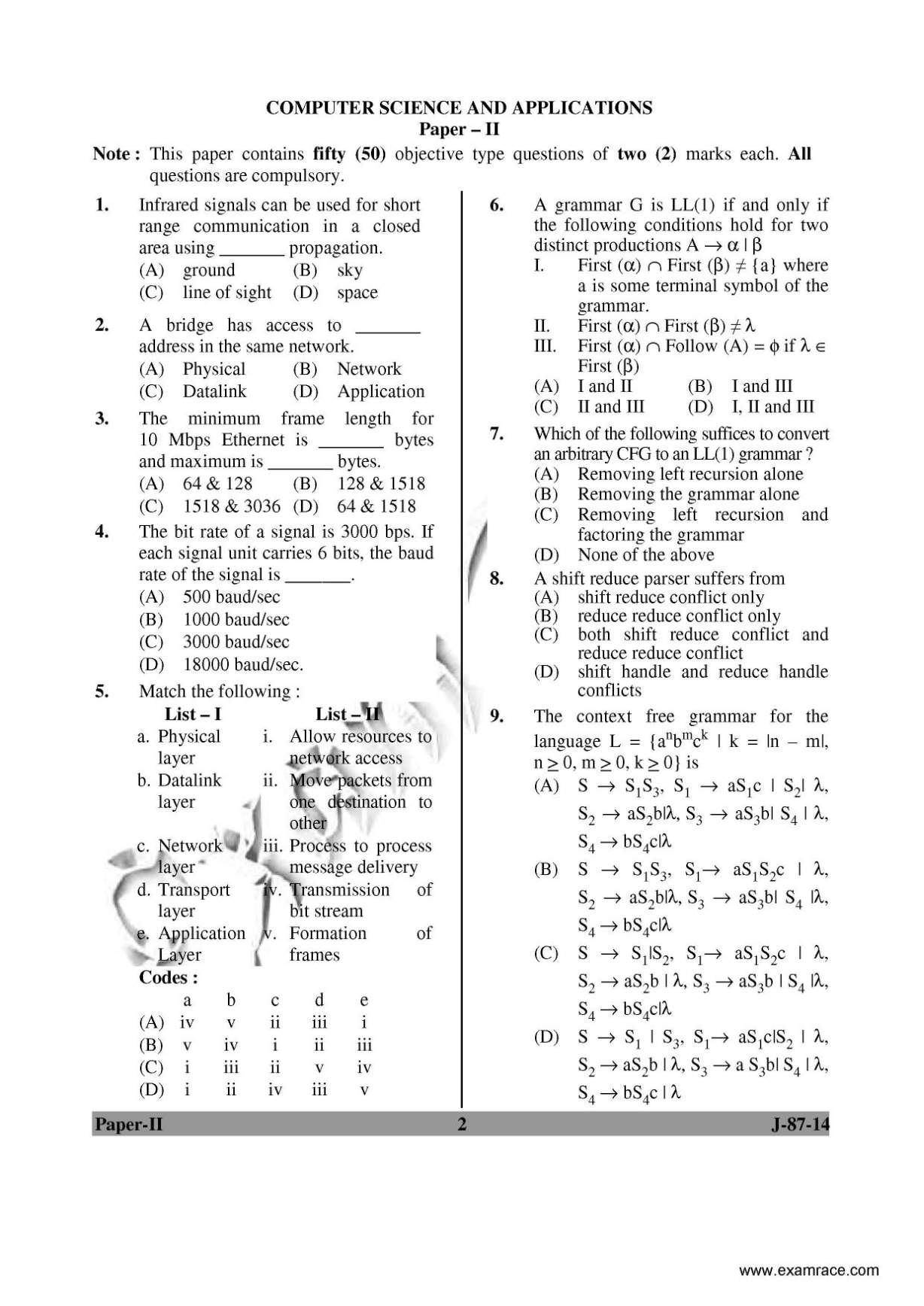 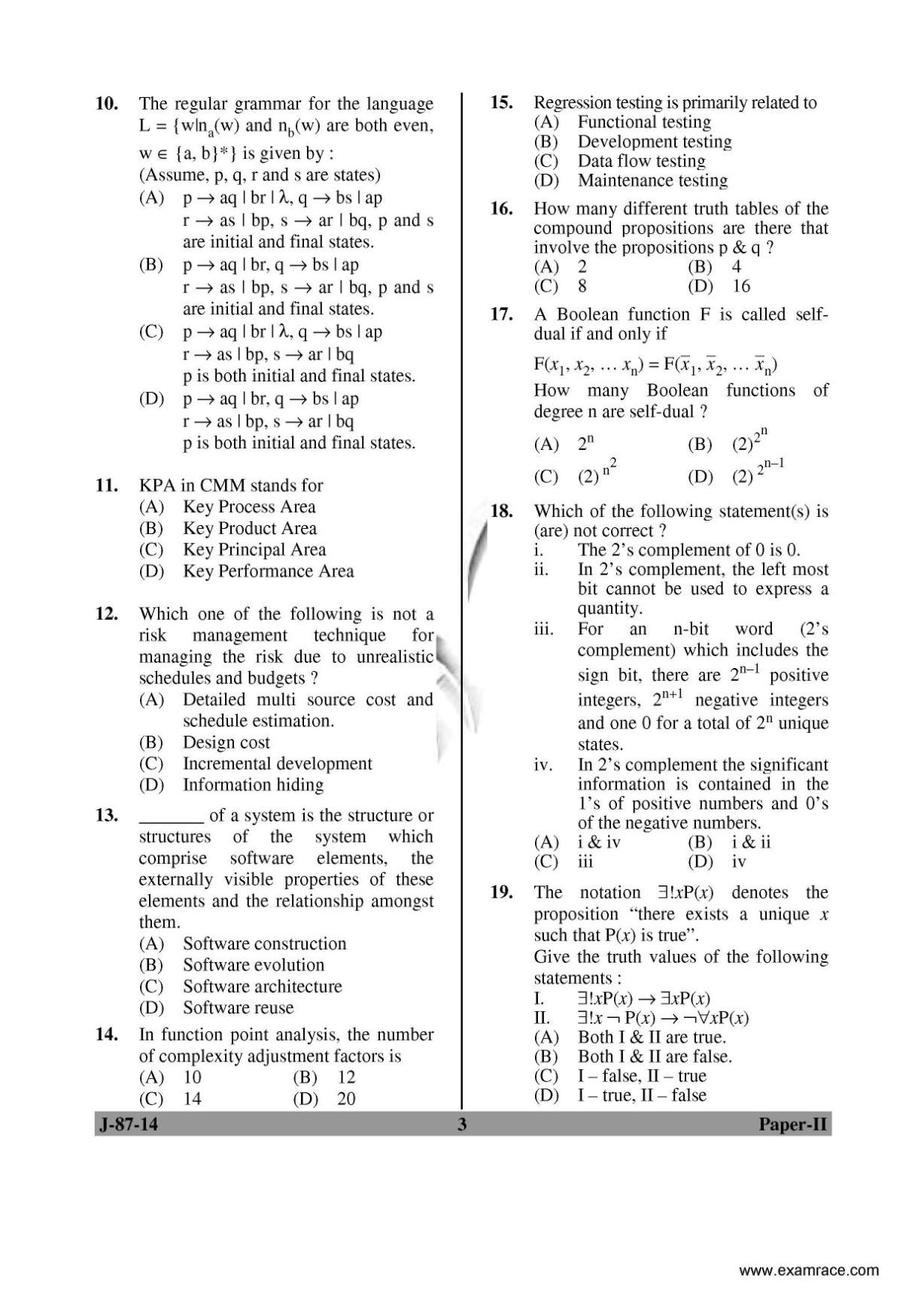 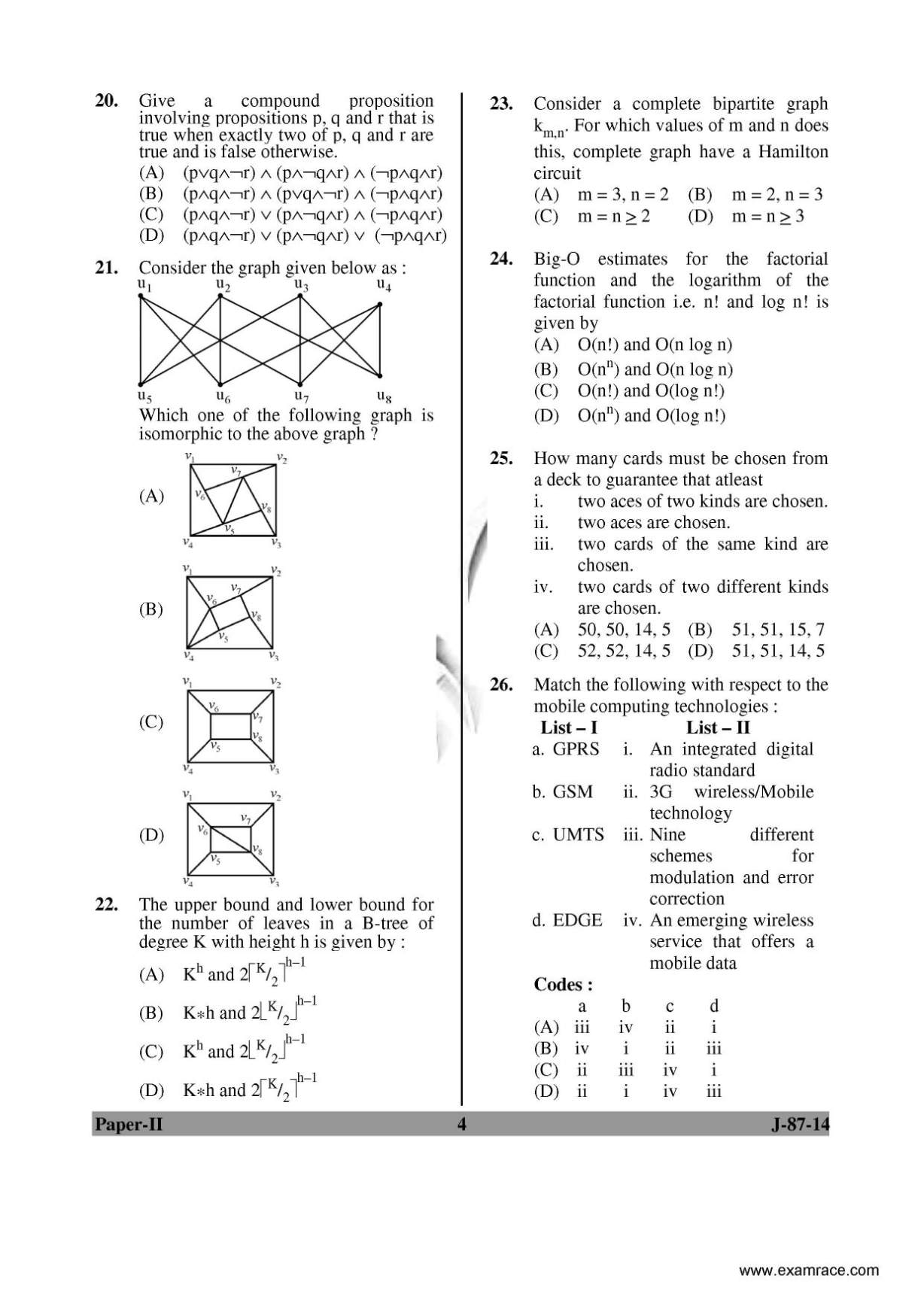 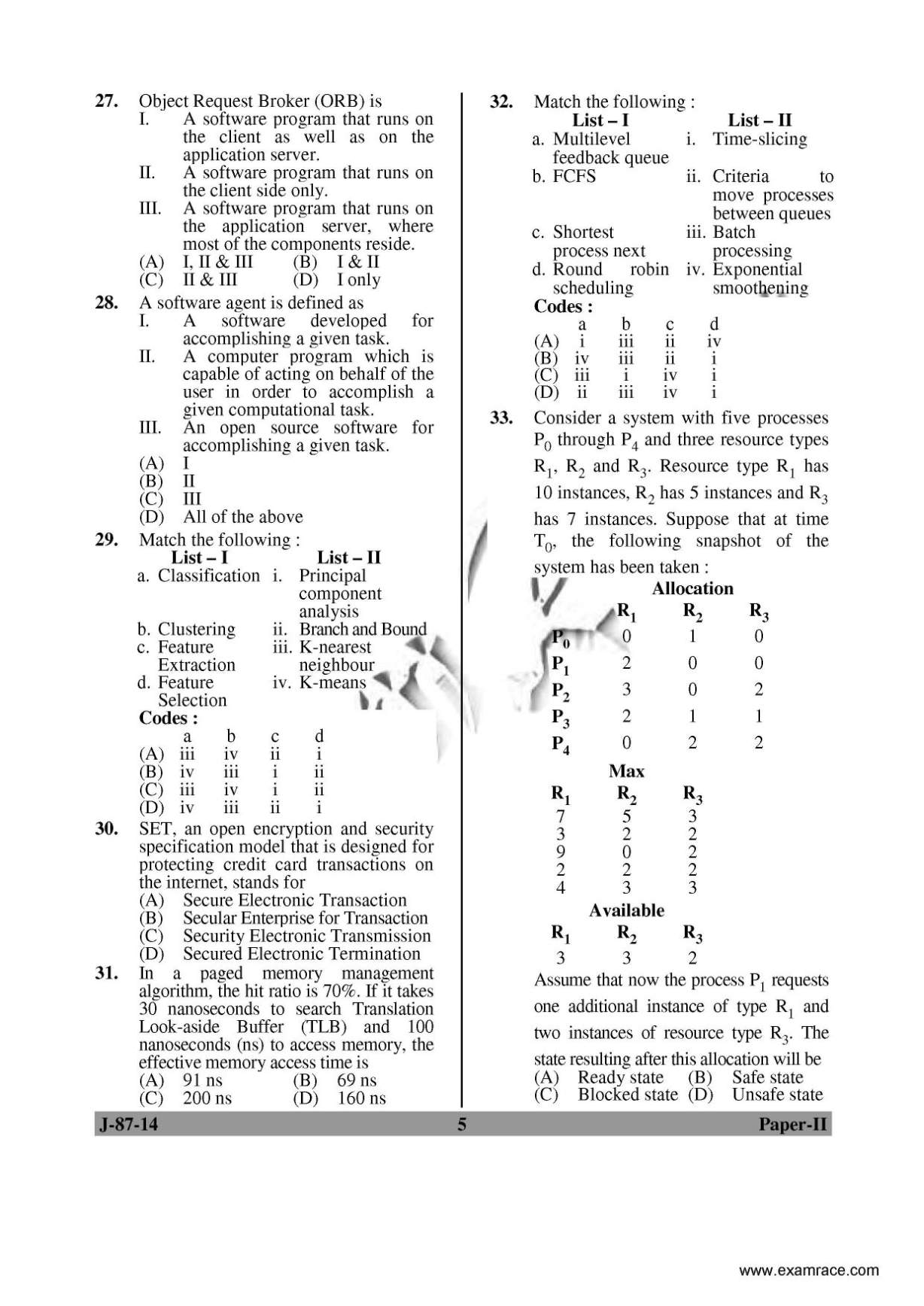 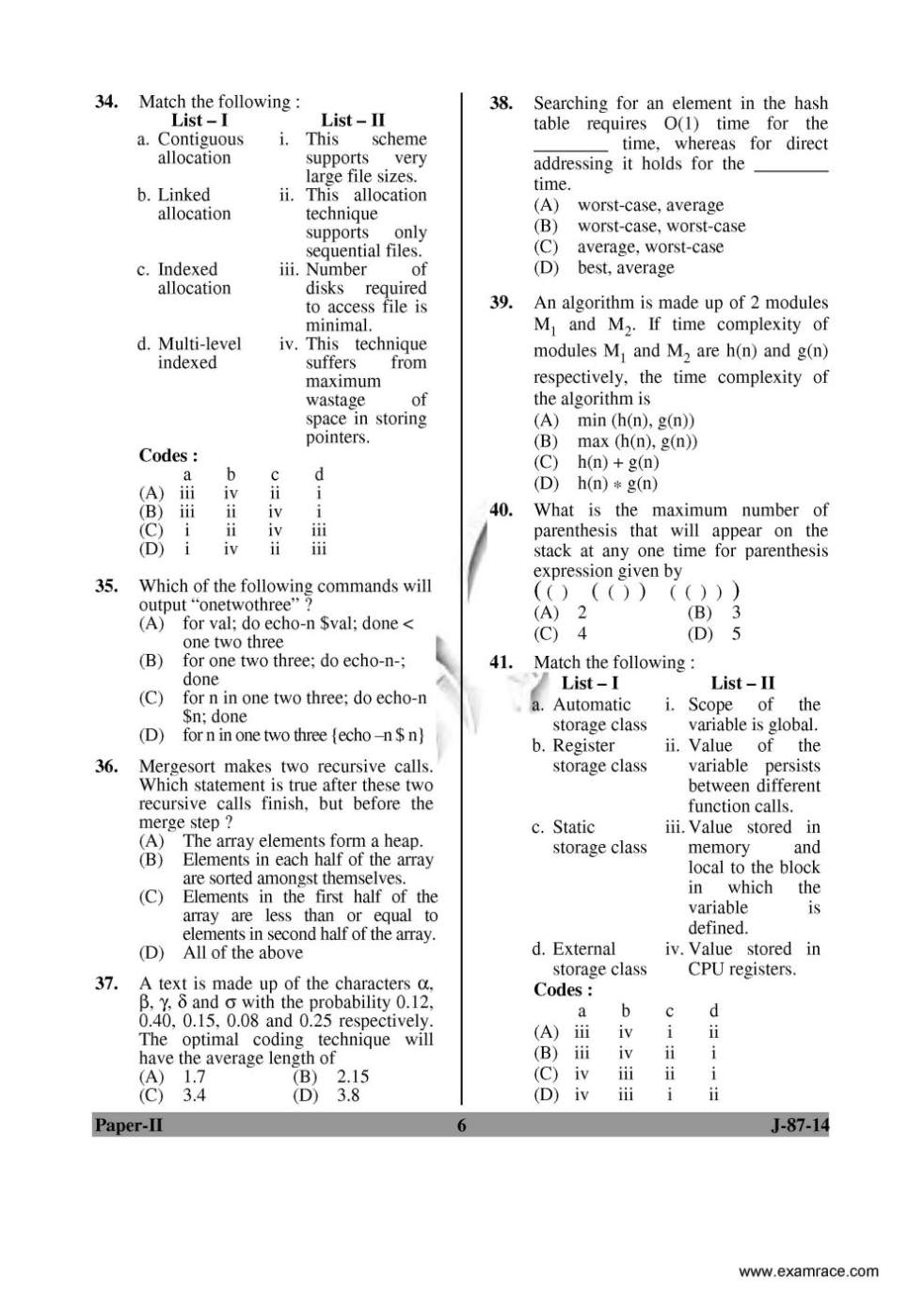 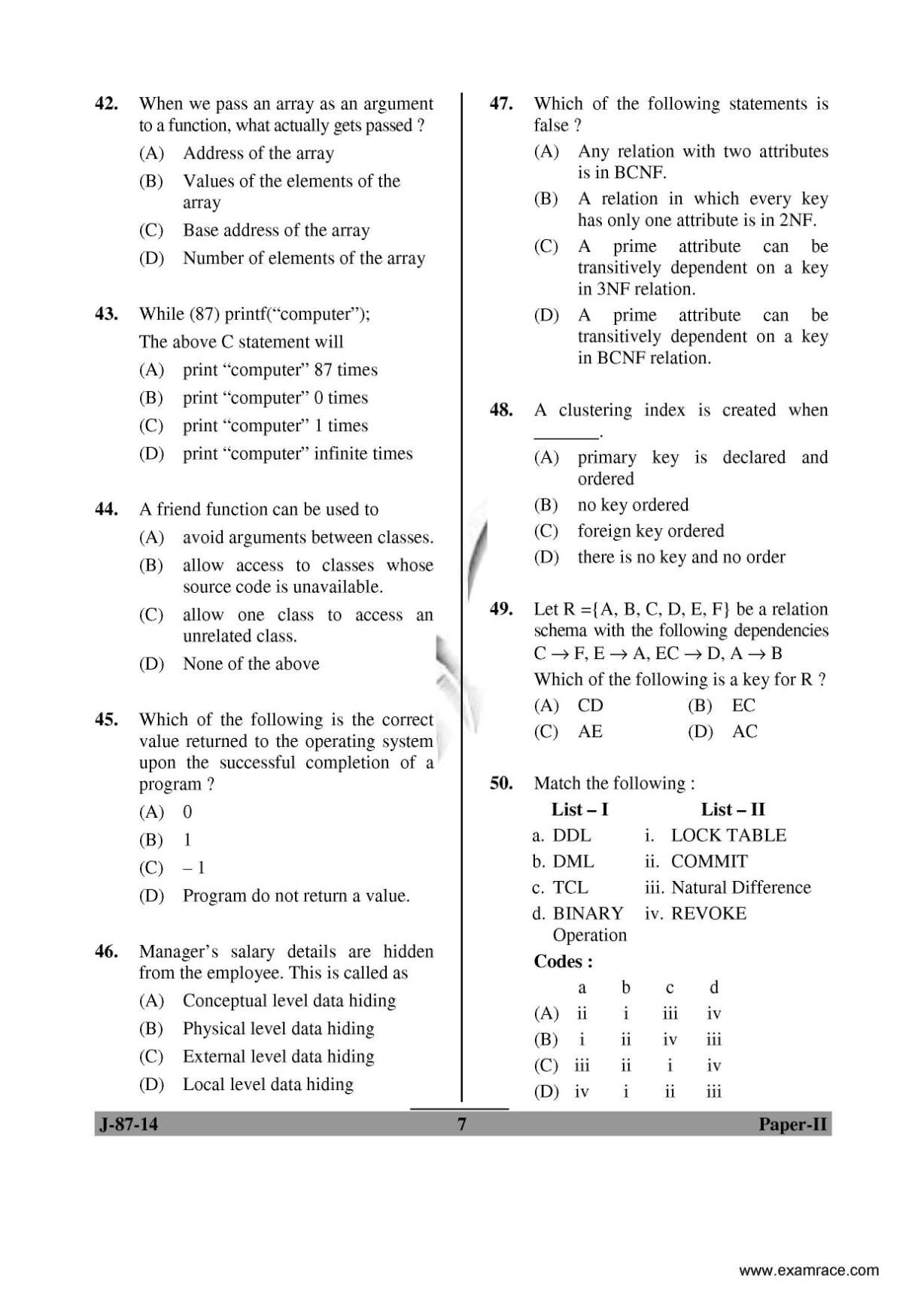 NET Exam CS Paper 2 |